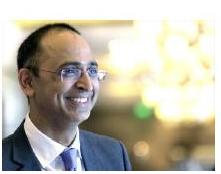  Nokia Solutions and Networks on Wednesday announced its MBit Index study that revealed a 87% rise in data traffic generated by 2G and 3G services during 2013, driven by strong 3G growth.
The study shows 3G data traffic leapt by 146%, surpassing the world average that is roughly doubling every year. Whereas, 2G data traffic continues to stabilize, growing by 59% over the same period.
“India is recording mobile broadband data growth figures higher than most other markets,” said Sandeep Girotra, head of India region at NSN. “With the recent spectrum auctions paving the way for acceleration of mobile broadband penetration in the country, there is a great opportunity for India to create a world-class infrastructure and improve the lives of millions of Indians. This can be achieved through a wider 3G rollout as well as through selected introduction of LTE technologies and the modernization of existing GSM networks”.

NSN’s MBit Index also shows that 3G users continue to consume more data on average than 2G users. In December 2013, a 3G user consumed 532 megabyte of data compared to 146 megabyte comsuption over 2G. In some of the major urban centers the average data consumption per user is as high as one gigabyte per month, indicating the rising popularity and uptake of 3G across India. In addition, premium tariff reductions in 3G services in early 2013 led to an increased migration of high end 2G customers to 3G.
Mobile data traffic generated by 3G services more than doubled in India in 2013, a rate much higher than growth seen in other parts of the world where mobile broadband data is expanding at 100% on average. This trend is in line with NSN’s Technology Vision 2020 that mobile networks will need to be readied to profitably deliver one gigabyte of personalized data per user per day by 2020.
Analysis by circles shows that category A is the highest contributor of 3G in India, driving half of all mobile data in the country. 3G mobile data consumption grew by a record of 185% in 2013, a remarkable increase considering that these circles had registered the highest 3G payload the year before.
In category B, 3G data payload surpassed that of metros with 3G now accounting for 31% of the total traffic. Both categories indicate a big demand of high- speed services, giving operators a huge opportunity to offer superior connectivity to their customers.
However, further research in ‘Top 50’ cities in all category circles reveals that 3G coverage in India is still limited and requires focused investments to achieve the data performance users demand. In category A for instance, the analysis of the leading 50 cities where 3G has been launched shows that additional 10% to 15% 3G sites are needed to match the existing 2G coverage. In category B there is a gap of 15% to 20% sites.
To help address the explosion in network data traffic and improve service quality in India, NSN offers the industry’s most comprehensive mobile broadband portfolio and services to deliver higher efficiency, lower costs and superior customer experience. |